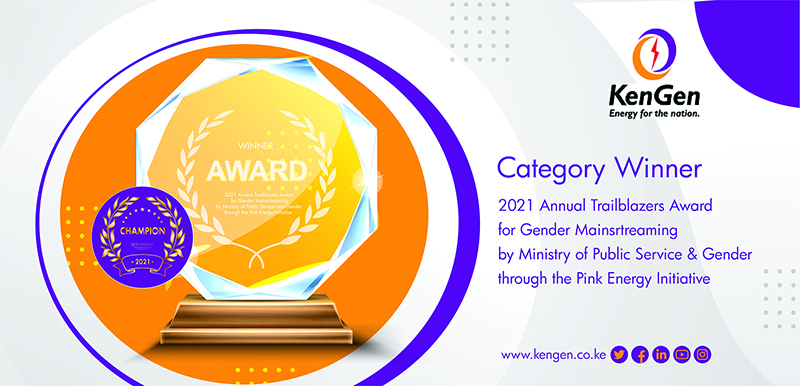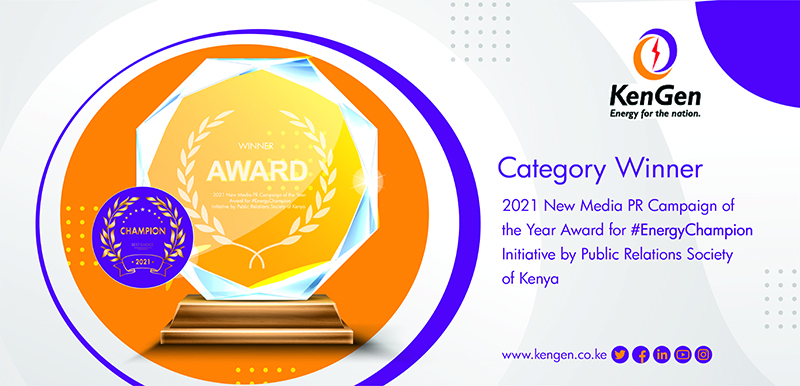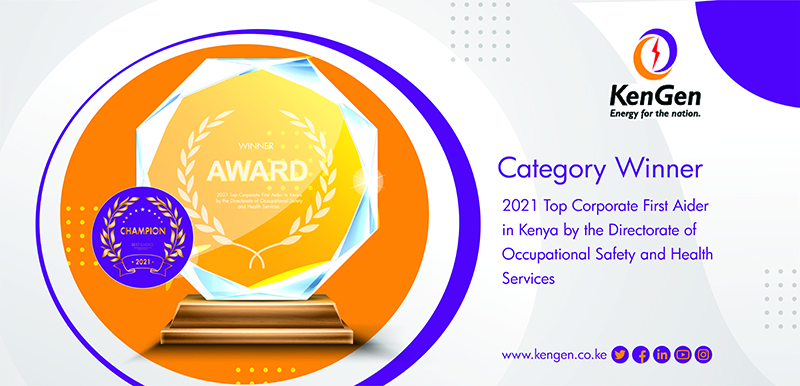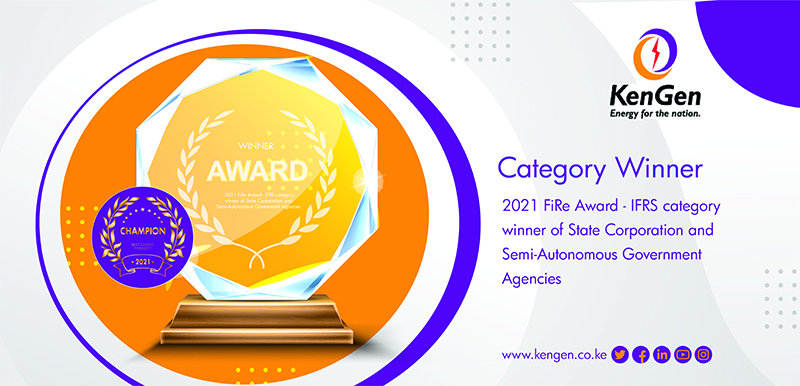On March 8th, 2022, the world commemorated the International Women's Day themed: Gender Equality for a Sustainable Tomorrow. President Uhuru Kenyatta led the nation in marking this significant global day. In his speech, President Kenyatta highlighted the strides that Kenya had made in empowering women. He also lauded women who have been trailblazers in their respective fields. KenGen Managing Director and CEO, Rebecca Miano was among the leaders feted by President Kenyatta.
His gracious words of praise and encouragement lead us to reflect on the KenGen gender mainstreaming initiative dubbed KenGen Pink Energy. What role does it plays in advocating gender equality? What lessons can be drawn from such platforms regarding sustainability and gender equality?
Pink Energy is an initiative to uplift the status of women employees at KenGen and the wider energy sector. Launched in November 2016, the initiative has gone a long way in creating change and enhancing the potential of women in the company. Anchored on three pillars: personal development and empowerment, creating a conducive work environment and creating gender awareness, the initiative continues to play a critical role in gender equality. Through the Initiative, employees receive training on gender matters and are nurtured to become brand ambassadors of gender equality. The platform also provides an avenue for employees to air their concerns on gender parity.
According to data from a 2019 McKinsey report, if the individual countries work together to close existing gender gaps, Africa has the potential to grow its economy by up to 10% of its current collective Gross Domestic Product (GDP) by the year 2025. The report titled: “The Power of Parity: Advancing Women’s Equality in Africa” paints a bright future for the continent suggesting that Africa can add up to $316 Billion to its GDP only by closing gender gaps.
In the same way, data from the United Nations indicates that putting women and girls at the centre of economies will fundamentally drive better and more sustainable development outcomes for all, support more rapid recovery, and place the world back on a footing to achieve the Sustainable Development Goals. In this case, platforms like KenGen Pink Energy create a conducive environment for such conversations to happen.
At the same time, gender-mainstreaming initiatives enable organisations to build a culture of gender equality at the workplace, constantly tracking the development and aiding the organisation in forging strong cohesion among its people.
That said, organizations and individuals need to leverage the power of home-grown initiatives to scale up the campaign on gender equality as we look forward to creating a sustainable and equitable future.
..............Ends.................
Christmas season is now at hand, yet another season of merry making. For some, it is time to glisten the season by lighting up the twinkle of Christmas trees. For most of us, Christmas tunes will be blaring out festive cheer in our living rooms almost non-stop. Undoubtedly, kitchens in most households will be extra busy as the task of preparing various delicacies goes into overdrive. All these activities will require power – electricity. That’s where the leading electric energy producer in East Africa, KenGen thrives best.
All year round, KenGen has kept its turbines turning to keep the country running. From the hydroelectric power turbines in KenGen’s hydro power stations, to the wind turbines at Ngong’ Hills, all the way to the steam driven turbines in the geothermal steam field of Olkaria, Naivasha, all systems will stay on the go to power the festivities.
For factories and facilities that will be operating throughout the festive season, KenGen is all set to ensure steady and reliable supply of electricity. As the economy steadily recovers from the reeling effects of the COVID-19 pandemic, KenGen is prepared to do its part in keeping up with the growing demand for electricity that recently reached an unprecedented historic high of 2,036 MW in November - the highest since the onset of the pandemic in March 2020.
And as we prepare to ring in the New Year 2022 with fireworks, KenGen employees across all its power stations will be keenly monitoring the instrument panels to ensure that power does not go out. As a tradition for nearly seven decades now, nothing will be left to chance, as you celebrate Christmas with family and friends and prepare to usher in the new year, KenGen pledges to energize you all the way throughout the festive season and beyond.
Going into the new year, plans are already underway to commission the Olkaria 1, Unit 6 geothermal power plant early next year, which will add 83.3MW to the national grid. Its commissioning will not only bring KenGen closer to the 2GW mark in its installed capacity but also bring the promise of competitively priced electricity closer to the nation. That is a promise KenGen is committed to keep by generating electricity for the nation to light up our country and continent.
Ends...//
Page 5 of 9





